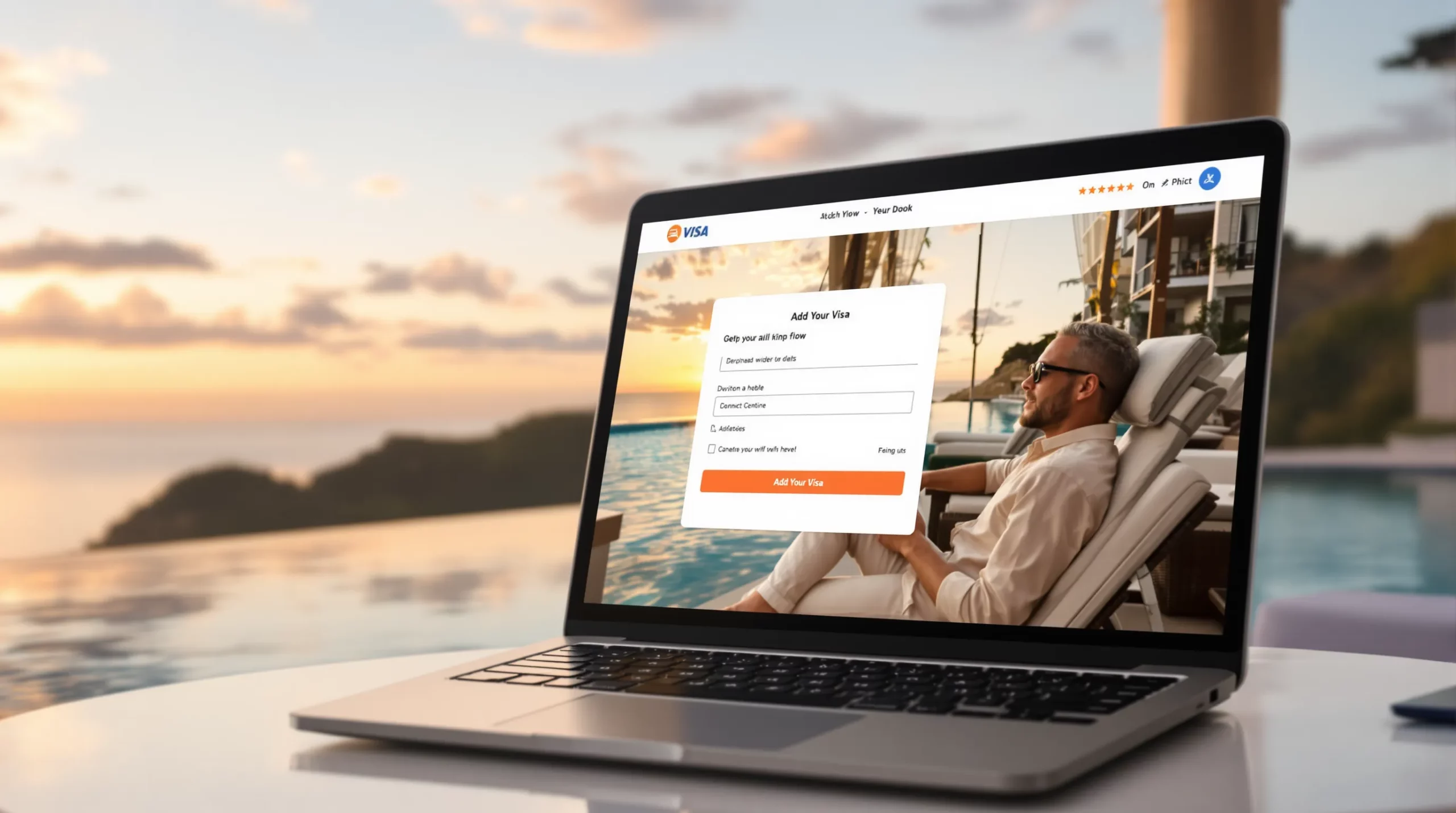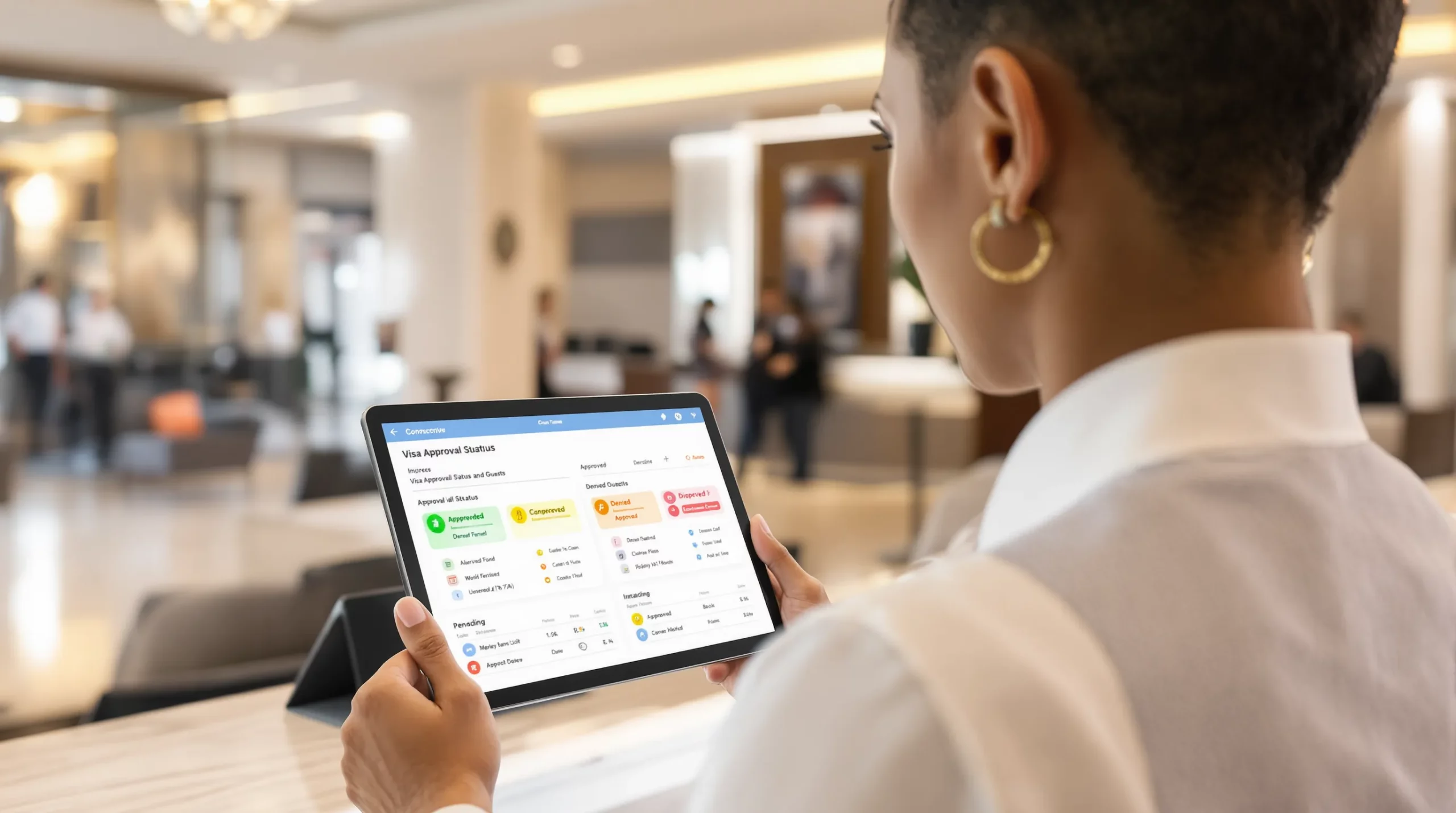How Hotels and Resorts Can Add eVisa Services to Boost Pre‑Arrival Conversions

Travelers book hotels well before they ever see the lobby—but many give up long before check-in. According to Adobe’s 2024 Digital Economy Index, global cart-abandonment rates hover around 83 % for travel bookings, with visa uncertainty ranking among the top five reasons guests hesitate to click “Pay Now.” That friction is a gold-mine opportunity for hospitality brands willing to solve it.
In this guide you will learn how hotels and resorts can add electronic-visa (eVisa) services to their pre-arrival journey to boost conversions, delight guests, and unlock a new ancillary-revenue stream—all without ripping out existing booking engines.
Why Visas Belong in the Hotel Booking Funnel
- Early reassurance = higher commitment. Guests who know they can secure the correct travel documents directly from your website feel safer making a non-refundable reservation.
- Eliminate last-minute cancellations. A 2023 Phocuswright survey found that 11 % of international hotel cancellations were triggered by visa delays or refusals. Removing that barrier early protects occupancy forecasts.
- Capture incremental revenue. Whether you add a small convenience fee or share revenue with an eVisa provider, visa services can add US $3–$10 per booking with negligible operational overhead.
- Reduce support tickets. Front-desk and concierge teams spend countless hours explaining consulate rules. Automated eVisa flows answer 90 % of those questions before arrival.
Cornell’s School of Hotel Administration reports that each 0.1-point lift in booking-flow conversion drives a 6 % jump in RevPAR for resort properties. Visa facilitation is one of the fastest routes to that lift.
What Makes eVisas Ideal for Hospitality
Most destination visas have moved online. Travelers fill out digital forms, upload passport scans, pay a fee, and receive a PDF permit within minutes or days—often called an eVisa, ETA, or travel authorization. Hotels can embed that workflow directly into their pre-arrival communications.
Key advantages:
- Fully remote: No embassy visits; the entire process happens on the guest’s phone.
- Deterministic eligibility logic: APIs tell guests up-front whether they qualify.
- Real-time status updates: Hotel CRMs can trigger reminders and upsells the moment a visa is approved.
For a refresher on the underlying tech, read our post on How eVisa APIs Work.
Integration Models: Pick the Right Fit for Your Property
| Model | Time-to-Market | Engineering Effort | UX Control | Best For |
|---|---|---|---|---|
| No-Code Widget | < 1 day | None (copy-paste script) | Low | Independent hotels, boutique resorts |
| White-Label Portal | 2–3 days | None | Medium (brand colors, logo) | Chains with central marketing teams |
| REST API | 2–4 weeks | Moderate | High (full ownership) | Groups with in-house booking engine |
SimpleVisa supports all three. If you’re exploring a quick pilot, the no-code widget lets you add a “Need a Visa?” step to checkout in under 30 minutes—see our tutorial: Embedding an eVisa Widget.

A 30-Day Roadmap to Go Live
Week 1 – Scope & Stakeholders
- Identify top origin markets that require visas for your destination.
- Set commercial goals (e.g., +0.5 % conversion, +US $4 ARPB).
- Assign an owner in revenue management or digital marketing.
Week 2 – Choose the Flow
- Decide between widget, portal, or API.
- Map the guest journey touchpoints: search results, room-selection page, booking confirmation, pre-arrival email, and app push.
Week 3 – Configure & Brand
- Add property logo, colors, and fonts in the SimpleVisa Partner Portal.
- Set pricing: pass-through, flat convenience fee, or revenue-share.
- Enable multilingual support for your top five guest languages.
Week 4 – Test & Train
- Use sandbox passports to submit test applications (takes < 5 minutes each).
- Train reservation and concierge teams with the 7-day program in “How to Train Customer Support Teams on eVisa Rules in One Week.”
- Launch A/B test: control group (no visa prompt) vs. variant (visa prompt).
Measuring Success: KPIs Hotels Should Track
- Visa-Attach Rate – % of international bookings that add a visa. Global hotel average: 4–6 %; beach resorts in visa-heavy markets hit 9 % (SimpleVisa research, 2025).
- Pre-Arrival Conversion – bookings that move from “reserved” to “confirmed” (deposit paid). Expect a 0.3–0.8 pp lift.
- Ancillary Revenue per Booking (ARPB) – incremental dollars from visa services divided by total bookings.
- Support Ticket Volume – visa-related emails/calls per 1 000 bookings. Properties typically see a 40 % drop.
For a deeper metrics playbook, see “5 KPIs to Track After Deploying a Visa Management Platform.”
Compliance & Security Checklist
- End-to-end AES-256 encryption and ISO 27001-certified data centers
- PCI-DSS compliant payment processing
- Role-based access controls for reservation agents
- GDPR/CCPA-ready data-deletion workflows
Our article on Top 8 Security Features to Demand in Any eVisa Solution offers a full RFP checklist.
Real-World Impact: A Caribbean Resort Snapshot
A 220-room all-inclusive resort in Curaçao embedded the SimpleVisa widget in March 2025. Within 60 days:
- Visa-attach rate hit 8.7 % on US and Canadian bookings.
- Overall booking conversion rose from 2.9 % to 3.4 % (+17 %).
- The property earned US $5.60 incremental revenue per booking.
- Guest-relations emails about visa rules dropped by 52 %.
Management rolled the program out to sister properties across the Lesser Antilles the same quarter.

Frequently Asked Questions
Do we need to handle guest passports or sensitive data ourselves? No. The SimpleVisa flow captures and stores documents on its secure servers, then returns a tokenised status to your PMS or CRM.
What happens if a guest’s visa is refused? The system flags the booking, allowing your team to offer re-application assistance, date changes, or cancellation policies—see our recovery guide “Visa Denied? 9 Strategies Every OTA Should Offer”.
Can we charge a service fee? Yes. Hotels can choose pass-through pricing, a flat markup, or a revenue-share model. Review examples in 7 Revenue-Sharing Models for Online Visa Processing Partners.
Will adding another step hurt our booking UX? A/B tests show that a contextual visa prompt with instant eligibility feedback actually reduces abandonment because it removes uncertainty. Keep the step optional and mobile-first.
How long does implementation really take? Many properties go live in under a week using the no-code widget. Full API integrations typically take 3–4 sprints, including QA.
Ready to turn visa headaches into higher RevPAR and happier guests? Schedule a 15-minute walkthrough with our hospitality solutions team and see how quickly you can launch a branded eVisa service—no dev backlog required.
Book a Demo